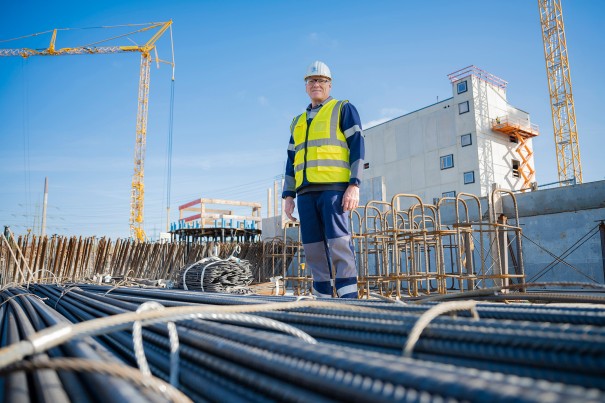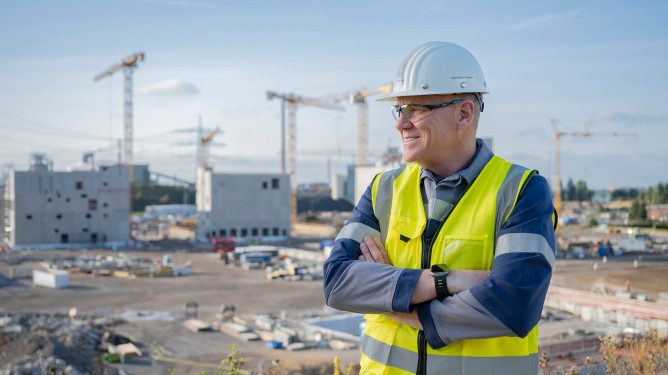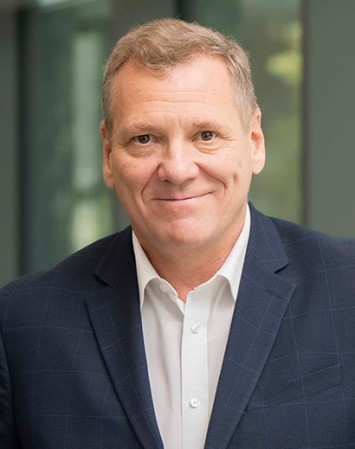Is it just the sheer size, or what are the particular challenges?
You have to remember that we are talking about a construction site that is as big as 40 soccer fields. We expect that at peak times there will be more than 2,000 people on the construction site in Duisburg in the future. There are bound to be hiccups here and there. In addition, we have to meet numerous requirements in order to obtain the necessary construction and operating permits for such a project. Unfortunately, this has taken a few extra months.
How difficult is it to integrate a construction project of this size into the existing steelworks complex?
The implementation on the factory premises in Duisburg presents us with the highest demands in various areas, such as planning, logistics, and safety. After all, the new direct reduction plant must be seamlessly integrated into existing production processes, supply lines, and infrastructure—this is technically highly demanding and requires precise coordination across all trades.

When do you think it can start?
We have not yet set a fixed date for the start of the DR plant. We are currently reviewing the schedule together with our main supplier SMS, which is an integral part of project management for projects of this size. However, we roughly estimate that the work will take about two more years after SMS takes over the construction site in October of this year.
There was already a lot to do before that. When you visit the construction site as project manager, what do you see?
Until recently, the construction site was dominated by enormous quantities of concrete and iron, because we had to lay the necessary foundations before SMS could begin with the steel construction and erection of the actual plant. For our largest unit, the direct reduction tower, which will be almost 150 meters high, a concrete slab measuring 40 by 40 meters and up to three meters thick was poured.
Where does all the material needed for this come from?
That's actually very interesting because the amount of concrete we need is so large that the construction companies have built a mobile concrete plant on the edge of the site to supply themselves. This is used to pour the concrete foundations and components for the five-story main switch building.
The construction of the plants in Duisburg is one of the world's largest industrial decarbonization projects and comes at a time when investments in sustainable industrial applications are being heavily questioned and publicly debated. Do you doubt yourself too?
No., we remain committed to green transformation and climate-neutral steel production. There is no way around decarbonizing CO2-intensive steel production in the long term. But for long-term success, we also depend on the emergence of a resilient hydrogen economy that will enable this decarbonization to be achieved at a viable cost.
Can you explain that, please?
The direct reduction plant has a production capacity of 2.5 million tons of directly reduced iron per year. To achieve this, the plant requires around 143,000 tons of hydrogen per year when operating at full capacity. The electricity required to produce this amount of hydrogen corresponds to approximately 60 percent of the annual electricity consumption of the city of Hamburg. If this amount of hydrogen is available to us at marketable prices, we can save up to 3.5 million tons of CO2 per year—that's almost 20 percent of our total emissions.
How will this work?
We are not dwelling on doubts, but are continuing to move forward courageously with the green transformation. As Germany's largest consumer of hydrogen, thyssenkrupp Steel is an initiator and driver of a high-performance hydrogen economy in Germany, paving the way for the decarbonization of the entire steel value chain. We are sticking to our goal of making steel production completely climate-neutral by 2045.
Thank you very much for talking to us, Mr. Greiner Pachter!





